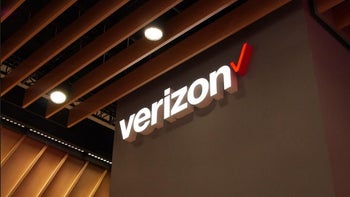Verizon has 209,000 net additions to its consumer postpaid smartphone business in Q2

Earlier today, the nation's largest wireless carrier released its earnings for the second quarter and first half of 2019. For the three month period covering April through the end of June, the carrier reported 420,000 postpaid smartphone net additions. While that trailed the 710,000 net smartphone additions reported by T-Mobile for the same period, it beat out the 72,000 net additions that AT&T had for the category during the same time period. Verizon also said that it had net phone additions of 245,000 in the period, up 23% from the second quarter of 2018, so it was a strong quarter for Big Red's wireless business. Verizon's wireless revenue rose 1% year-over-year to $22.7 billion with service revenue up 3.1% on an annual basis. The wireless provider had the lowest postpaid phone churn in the industry at .76% while retail postpaid churn came in at 1.02%.
If we stick to the consumer end of the business, postpaid smartphone net additions came to 209,000, a 17% gain over the same quarter last year. Verizon also had postpaid phone net additions of 73,000 on the consumer side and a net loss in tablets of 134,000. It added 187,000 other connected devices in the period, mostly wearables. Consumer retail postpaid phone churn was a very impressive .72% for the quarter.
"Verizon finished strong in the first half of 2019 by delivering solid financial results while transforming the business under the new operating structure and advancing our leadership in 5G. Verizon made history this quarter by becoming the first carrier in the world to launch 5G mobility. We are focused on optimizing our next-generation networks and enhancing the customer experience while we head into the second half of the year with great momentum."-Hans Vestberg, chairman and CEO, Verizon
Verizon subscribers moved up to higher-priced plans during the second quarter and added new lines to existing plans (most likely because of those phone promotions that require existing customers to add a new line). This helped drive consumer wireless revenue up by 2.5% during the period. Equipment sales (read phones) were lower. And the company also spent a ton of money, around $8 billion, in capital expenditures during the first half of the year, mostly to help build out and launch its 5G Ultra Wideband network. It also spent to increase capacity on its 4G LTE network due to a surge in the amount of data and video traffic carried on the pipeline.
Verizon will have its Ultra wideband 5G service in 30 cities by the end of this year
Overall, Verizon's businesses, including its cable operations, took in $32.07 billion in revenue for the quarter. That was .4% lower year over year. Net income declined 4.1% to $4.07 billion or .95 cents a share, down from the $1.00 a share Verizon reported for last year's Q2. For the first half of 2019, revenue rose 1.4% to $55.55 billion and net earnings were up 3.6% to $9.23 billion. Earnings per share for the first six months of this year were up 3.3% from $2.10 to $2.17.

Verizon's current 5G phones; the LG V50 ThinQ 5G, the Samsung Galaxy S10 5G and the Moto Z4 with 5G Moto Mod attached
Investors thought the results were more positive than negative. While the stock closed NYSE trading down 1 penny at $55.26, the entire market was blasted today so Verizon's performance was actually bullish.
By the end of the year, the company's Ultra Wideband 5G network will be operating in 30 cities and the company currently offers three handsets that connect to the carriers mmW 5G spectrum. There is the Samsung Galaxy S10 5G, the LG V50 ThinQ 5G, and the Motorola Moto Z4. The latter becomes a 5G phone once the 5G Moto Mod accessory is attached to the back of the phone.










Things that are NOT allowed: